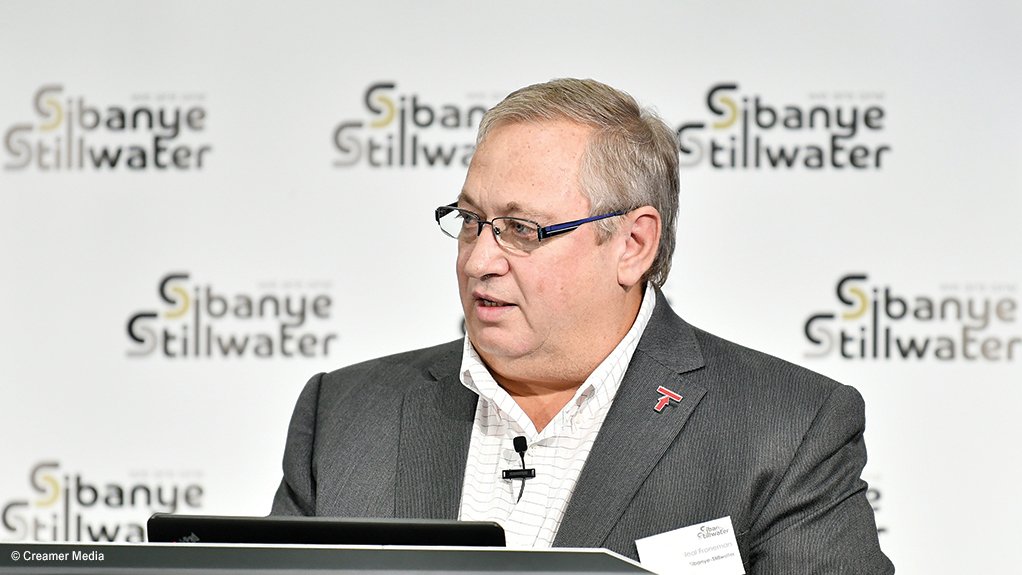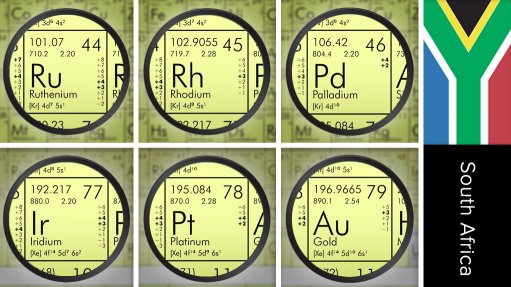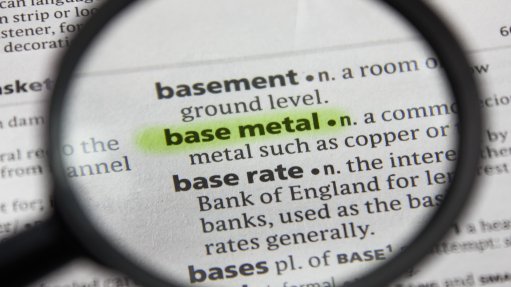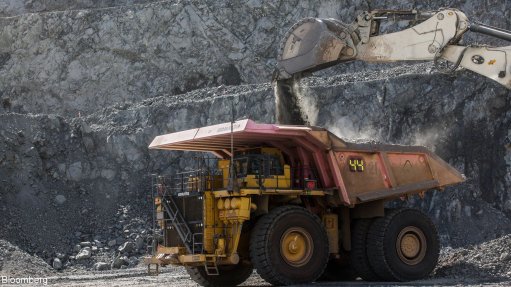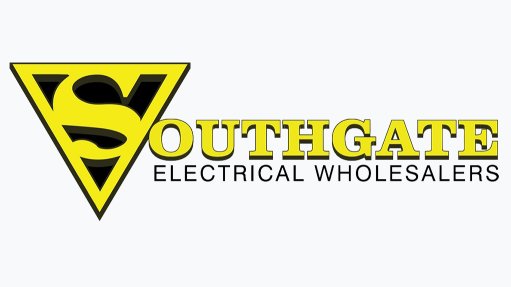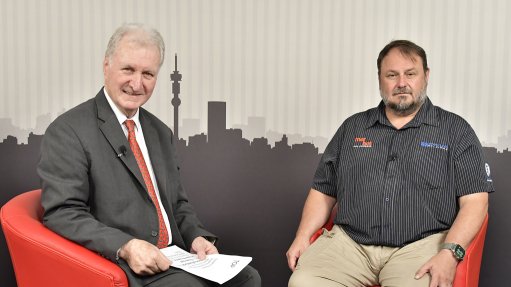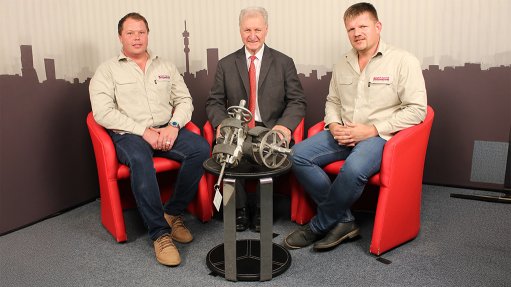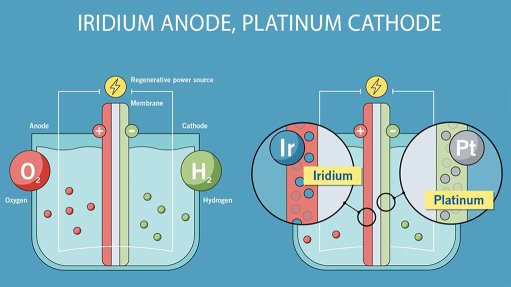Sibanye reports 55.1% increase in lithium carbonate equivalent resources
JSE- and NYSE-listed Sibanye-Stillwater has reported a 55.1% increase in attributable lithium mineral resources as at the end of last year, along with a general expansion and diversification of its mineral reserve base.
The 55.1% increase in attributable lithium mineral resources to 702 000 t of lithium carbonate equivalent (LCE) was driven by successful exploration activities at the Keliber project, in Finland, and an updated mineral resource estimate (MRE) at the Rhyolite Ridge project, in Nevada, in the US.
The addition of the Mt Lyell copper resource, in Tasmania, Australia, is in progress. Sibanye is studying the feasibility of reopening this mine.
During 2023, with the takeover of New Century Resources, Sibanye acquired the option to acquire the historic Mt Lyell copper mine from Vedanta Resources. The option was exercised during November last year.
Overall, Sibanye reported copper mineral resources of 8.16-billion pounds, down 39.4% year-on-year.
The exercise of the Mt Lyell option has added 1.61-billion pounds of contained copper. However, unchanged mineral resources at the Altar project, owing to a 60% earn-in obtained by Aldebaran Resources – the manager of the Altar exploration project – 6.75-billion pounds of attributable copper mineral resources have been impacted.
As such, Sibanye’s mineral resources now stand at 6.39-billion pounds of copper, of which 48.61% is attributable.
“In line with our strategy, we have expanded and diversified our asset portfolio across five continents. The substantial mineral resources and reserves the group holds, serve as the foundation for long-term production of a varied mix of metals and minerals.
“This not only mitigates risk through diversification but supports the company's strategy of producing green metals that will underpin future energy solutions. The 55.1% increase in attributable lithium mineral resources, and the addition of the Mt Lyell copper mineral resources, are particularly pleasing," Sibanye CEO Neal Froneman said on February 26.
Meanwhile, Sibanye reported stable platinum and palladium (2E) platinum group metal (PGM) mineral resources of 87.8-million ounces, which was up 4.4%, and unchanged mineral reserves of 26.3-million ounces at its US PGM operations.
Platinum, palladium, rhodium and gold (4E) PGM mineral resources of 182.8-million ounces were up 3.1%, and mineral reserves of 28.1-million ounces down 10.4% at Sibanye’s South African PGM operations. This reduction in reserves was largely driven by the depletion of 1.9-million ounces and the exclusion of the North Hill project at Mimosa, which removed another 1.5-million ounces.
Gold mineral resources of 41.2-million ounces decreased by 23% and mineral reserves of 10.9-million ounces decreased by 15.7% at Sibanye’s South African gold operations and projects, including DRDGOLD. This was impacted by the rationalisation at the Kloof and Beatrix operations, which led to the cessation of production at the Kloof 4 shaft and Beatrix West shafts.
Meanwhile, zinc mineral resources of about three-billion pounds were up 257% and mineral reserves of 1.73-billion pounds were also up 287%. This was driven by the 100% acquisition of New Century Resources.
Uranium, in particular uranium oxide (U3O8), mineral resources of 59.2-million pounds represented a decrease of 11.1%. This was owing to reasonable prospects for eventual economic extraction (RPEEE) considerations, while portions of the Cooke Millsite tailings storage facility (TSF), which was down 7.4-million pounds, were excluded.
Given Sibanye’s longer-term outlook on PGM prices, mineral reserves and mineral resources have remained relatively stable, with mineral resources depletion offset by successful brownfield exploration activity and enhanced by continued improvement in estimation practices.
In light of the current depressed palladium price, an ongoing review of the US PGM operations' production and ramp-up profiles is taking place, Sibanye said.
Meanwhile, the MRE for the Marathon project, in Canada, remained unchanged during 2023. However, Sibanye's shareholding in Generation Mining changed from 18.19% to 13.9% during the year, resulting in the associated decrease in attributable mineral resources.
The group has an agreement with emerging lithium-boron producer Ioneer to establish a 50:50 joint venture (JV) with respect to the Rhyolite Ridge project, which is in the final stage of permitting, with a record of decision expected in the second half of this year.
During April last year, Ioneer announced an updated MRE for the South basin at the project, now comprising 360-million tonnes, containing 3.4-million tonnes of LCE and 14.1-million tonnes boric acid equivalent.
Accordingly, Sibanye's attributable mineral resources have been adjusted based on its 6.91% legal interest in Ioneer.
At the Altar copper exploration project, total copper mineral resources are 6.39-billion pounds, a year-on-year decrease of 39.4%.
The Altar in situ MRE remained unchanged year-on-year. During 2023, Aldebaran Resources, the manager of the project, gave notice that they had completed the contractual expenditures to gain a 60% interest in the Altar project from Sibanye.
Accordingly, Sibanye's attributable copper mineral resources were adjusted, taking into consideration its 40% project-level interest, and 14.35% equity shareholding in Aldebaran Resources, as of December 31, 2023, which now totals 48.61% versus 100% in 2022.
Given the lack of continued project and exploration work by Aldebaran, and considering the requirement for the reasonable prospect for economic extraction, Sibanye excluded the previously reported Rio Grande project from its total copper mineral resources.
In Sibanye’s South African PGM operations, the total 4E PGM mineral resources amount to 182.8-million ounces, a year-on-year increase of 3.1%. Total 4E PGM mineral reserves are now at 28.1-million ounces, a year-on-year decrease of 10.4%.
The company said mineral resources were positively impacted on by the incorporation of the Schaapkraal prospecting right mineral resources of 8.97-million ounces into the Marikana operation, which was previously excluded subject to the approval of the prospecting right renewal.
Apart from the depletion of 1.9-million ounces, the reduction in mineral reserves can mainly be ascribed to the exclusion of the Mimosa North Hill project, which removed 1.5-million ounces, owing to commercial considerations, partially offset by the gain of 500 000 oz from the acquisition of the additional 50% in the Kroondal operation.
In South African PGM exploration projects, the total 4E PGM mineral resources now stand at 51.5-million ounces, a year-on-year decrease of 3%.
This change relates to the Blue Ridge JV with Imbani Platinum, where an agreement has been reached to apply for and proceed with official mine closure. As such, Sibanye excluded the related mineral resources.
In the company’s South African gold operations, the total gold mineral resource amounts to 41.2-million ounces, marking a year-on-year decrease of 22.7%, along with total gold mineral reserves of 8.4-million ounces, which is a decrease of 18.4%.
The change in mineral resources can mainly be attributed to: the closure of Kloof 4 shaft, which resulted in a decrease of 6.1-million ounces; the exclusion of the below infrastructure employee banded area at Kloof 7 shaft, resulting in another drop of 4.9-million ounces, owing to having no RPEEE after the closure of Kloof 4 shaft; and the cessation of Beatrix 4 shaft, resulting in another decrease of 1.5-million ounces. However, this was offset by minor additions elsewhere.
Apart from the depletion of 800 000 oz, the change in mineral reserves can mainly be attributed to the closure of Kloof 4 shaft, which removed 1.5-million ounces, as well as further adjustments at Driefontein and Kloof operations owing to area exclusions and changes in the resource of 500 000 oz.
At the South African Burnstone gold development project, there remains a total gold mineral resource of 8.8-million ounces, a year-on-year decrease of 4%, and total gold mineral reserves of 2.5-million ounces, a decrease of 5.4%.
Sibanye said that the decrease in mineral resources at Burnstone was ascribed to a reduction in the inferred mineral resources based on estimation practices. The minor reduction in mineral reserves was driven by the exclusion of a small area based on logistical considerations.
At the South African Southern Free State (SOFS) gold exploration project, there is a total gold mineral resource of 6.9-million ounces, which remained unchanged.
The SOFS project, in the Free State, adjacent to Sibanye’s Beatrix mining right, remains a fully mining permitted development option.
Regarding uranium exploration projects, Sibanye said it had U3O8 mineral resources totalling 59.2-million pounds, marking a decrease of 11.1%.
A review of the economic potential of the remaining uranium mineral resources associated with the Cooke and Ezulwini TSFs has resulted in the exclusion of 7.4-million pounds relating to the Millsite TSF.
In Europe, specifically in battery metals, the Keliber lithium development project reports LCE mineral resources of 471 000 t, a year-on-year increase of 28.6%, and LCE mineral reserves of 182 000 t, a decrease of 6%.
Sibanye said ongoing successful exploration activities at the Keliber project had resulted in an increase in the mineral resources at the previously reported deposits, as well as the identification of additional mineralised areas.
A revision in estimation methodology, which now better delineates and distinguishes between ore and barren material inclusions, has also had a positive impact on the reported grade, which has increased to 1.21% lithium oxide.
However, Sibanye said a decrease of 6% was owing to a reduction in attributable ownership from 84.96% to 79.82%.
In Australia, the company’s zinc tailings retreatment, which is part of the circular economy, at the Century zinc operation, including on-lease in-situ exploration projects, reports zinc mineral resources of about three-billion pounds, marking a year-on-year increase of 257%, along with zinc mineral reserves of 1.73-billion pounds, a year-on-year increase of 287%.
The year-on-year change in mineral resources and mineral reserves were primarily driven by the increase in attributable ownership to 100%, partially offset by mining depletion of the finite TSF mineral reserves.
The Watson's Lode Inferred mineral resource was excluded owing to unfavourable RPEEE considerations, driven by structural complexity.
Article Enquiry
Email Article
Save Article
Feedback
To advertise email advertising@creamermedia.co.za or click here
Press Office
Announcements
What's On
Subscribe to improve your user experience...
Option 1 (equivalent of R125 a month):
Receive a weekly copy of Creamer Media's Engineering News & Mining Weekly magazine
(print copy for those in South Africa and e-magazine for those outside of South Africa)
Receive daily email newsletters
Access to full search results
Access archive of magazine back copies
Access to Projects in Progress
Access to ONE Research Report of your choice in PDF format
Option 2 (equivalent of R375 a month):
All benefits from Option 1
PLUS
Access to Creamer Media's Research Channel Africa for ALL Research Reports, in PDF format, on various industrial and mining sectors
including Electricity; Water; Energy Transition; Hydrogen; Roads, Rail and Ports; Coal; Gold; Platinum; Battery Metals; etc.
Already a subscriber?
Forgotten your password?
Receive weekly copy of Creamer Media's Engineering News & Mining Weekly magazine (print copy for those in South Africa and e-magazine for those outside of South Africa)
➕
Recieve daily email newsletters
➕
Access to full search results
➕
Access archive of magazine back copies
➕
Access to Projects in Progress
➕
Access to ONE Research Report of your choice in PDF format
RESEARCH CHANNEL AFRICA
R4500 (equivalent of R375 a month)
SUBSCRIBEAll benefits from Option 1
➕
Access to Creamer Media's Research Channel Africa for ALL Research Reports on various industrial and mining sectors, in PDF format, including on:
Electricity
➕
Water
➕
Energy Transition
➕
Hydrogen
➕
Roads, Rail and Ports
➕
Coal
➕
Gold
➕
Platinum
➕
Battery Metals
➕
etc.
Receive all benefits from Option 1 or Option 2 delivered to numerous people at your company
➕
Multiple User names and Passwords for simultaneous log-ins
➕
Intranet integration access to all in your organisation



